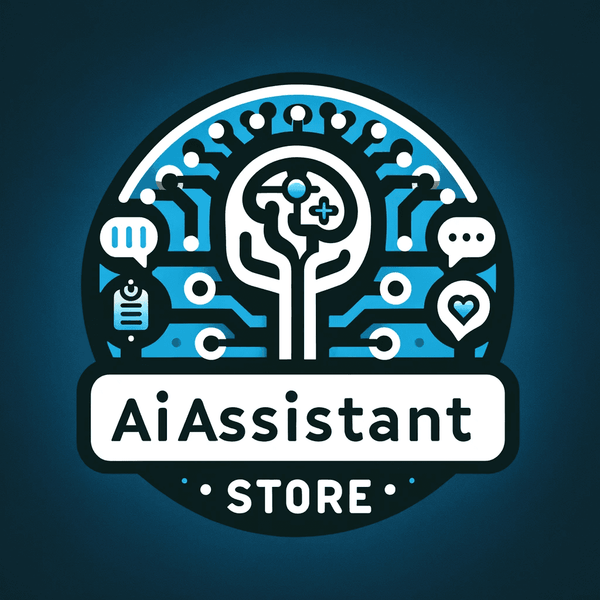Let’s not pretend this is simple. Anyone who says “just train a model” like it’s boiling pasta either hasn't done it or had someone else suffer through the worst parts for them. You don’t just “train an AI model.” You raise it. It’s more like raising a difficult child with infinite memory but no instincts.
And weirdly, that makes it kinda beautiful. 💡
Articles you may like to read after this one:
🔗 Top 10 AI Tools for Developers – Boost Productivity, Code Smarter, Build Faster
Explore the most effective AI tools helping developers streamline workflows and speed up the development process.
🔗 Best AI Tools for Software Developers – Top AI-Powered Coding Assistants
A roundup of AI tools every developer should know about to enhance code quality, speed, and collaboration.
🔗 No-Code AI Tools
Browse the AI Assistant Store's curated list of no-code tools that make building with AI accessible to everyone.
First Things First: What Is Training an AI Model? 🧠
Okay, pause. Before diving into layers of tech jargon, know this: training an AI model is essentially teaching a digital brain to recognize patterns and react accordingly.
Except-it doesn’t understand anything. Not context. Not emotion. Not even logic, really. It “learns” by brute-forcing statistical weights until the math lines up with reality. 🎯 Imagine tossing darts blindfolded until one hits the bullseye. Then doing that five million more times, adjusting your elbow angle one nanometer each time.
That's training. It's not smart. It's persistent.
1. Define Your Purpose or Die Trying 🎯
What are you trying to solve?
Don’t skip this. People do-and end up with a Franken-model that can technically classify dog breeds but secretly thinks Chihuahuas are hamsters. Be brutally specific. “Identify cancerous cells from microscope images” is better than “do medical stuff.” Vague goals are project killers.
Better yet, phrase it like a question:
“Can I train a model to detect sarcasm in YouTube comments using only emoji patterns?” 🤔
Now that’s a rabbit hole worth falling down.
2. Dig Up the Data (This Part Is… Bleak) 🕳️🧹
This is the most time-consuming, under-glamorized, and spiritually exhausting phase: data collection.
You’ll scroll forums, scrape HTML, download sketchy datasets off GitHub with weird naming conventions like FinalV2_ActualRealData_FINAL_UseThis.csv. You’ll wonder if you’re breaking laws. You might be. Welcome to data science.
And once you get the data? It’s filthy. 💩 Incomplete rows. Misspelled labels. Duplicates. Glitches. One image of a giraffe labeled “banana.” Every dataset is a haunted house. 👻
3. Preprocessing: Where Dreams Go to Die 🧽💻
You thought cleaning your room was bad? Try preprocessing a few hundred gigabytes of raw data.
-
Text? Tokenize it. Remove stopwords. Handle emojis or die trying. 😂
-
Images? Resize. Normalize pixel values. Worry about color channels.
-
Audio? Spectrograms. Enough said. 🎵
-
Time-series? Better hope your timestamps aren’t drunk. 🥴
You'll write code that feels more janitorial than intellectual. 🧼 You'll second-guess everything. Every decision here affects everything downstream. No pressure.
4. Choose Your Model Architecture (Cue Existential Crisis) 🏗️💀
Here’s where people get cocky and download a pre-trained transformer like they’re buying an appliance. But hold up: do you need a Ferrari to deliver pizza? 🍕
Pick your weapon based on your war:
| Model Type | Best For | Pros | Cons |
|---|---|---|---|
| Linear Regression | Simple predictions on continuous values | Fast, interpretable, works with small data | Poor for complex relationships |
| Decision Trees | Classification & regression (tabular data) | Easy to visualize, no scaling needed | Prone to overfitting |
| Random Forest | Robust tabular predictions | High accuracy, handles missing data | Slower to train, less interpretable |
| CNN (ConvNets) | Image classification, object detection | Great for spatial data, strong pattern focus | Requires lots of data and GPU power |
| RNN / LSTM / GRU | Time-series, sequences, text (basic) | Handles temporal dependencies | Struggles with long-term memory (vanishing gradients) |
| Transformers (BERT, GPT) | Language, vision, multi-modal tasks | State-of-the-art, scalable, powerful | Hugely resource-intensive, complex to train |
Don’t overbuild. Unless you’re just here to flex. 💪
5. The Training Loop (Where Sanity Frays) 🔁🧨
Now it gets weird. You run the model. It starts dumb. Like, “all predictions = 0” dumb. 🫠
Then... it learns.
Through loss functions and optimizers, backpropagation and gradient descent-it tweaks millions of internal weights, trying to reduce how wrong it is. 📉 You’ll obsess over graphs. You’ll scream at plateaus. You’ll praise tiny dips in validation loss like they’re divine signals. 🙏
Sometimes the model improves. Sometimes it collapses into nonsense. Sometimes it overfits and becomes a glorified tape recorder. 🎙️
6. Evaluation: Numbers vs. Gut Feeling 🧮🫀
This is where you test it against unseen data. You’ll use metrics like:
-
Accuracy: 🟢 Good baseline if your data isn’t skewed.
-
Precision / Recall / F1 Score: 📊 Critical when false positives hurt.
-
ROC-AUC: 🔄 Great for binary tasks with curve drama.
-
Confusion Matrix: 🤯 The name is accurate.
Even good numbers can mask bad behavior. Trust your eyes, your gut, and your error logs.
7. Deployment: AKA Release the Kraken 🐙🚀
Now that it “works,” you bundle it up. Save the model file. Wrap it in an API. Dockerize it. Toss it into production. What could go wrong?
Oh, right-everything. 🫢
Edge cases will pop up. Users will break it. Logs will scream. You’ll fix things live and pretend you meant to do it that way.
Final Tips from the Digital Trenches ⚒️💡
-
Garbage data = garbage model. Period. 🗑️
-
Start small, then scale. Baby steps beat moonshots. 🚶♂️
-
Checkpoint everything. You’ll regret not saving that one version.
-
Write messy but honest notes. You'll thank yourself later.
-
Validate your gut with data. Or not. Depends on the day.
Training an AI model is like debugging your own overconfidence.
You think you’re smart until it breaks for no reason.
You think it’s ready until it starts predicting whales in a dataset about shoes. 🐋👟
But when it clicks-when the model actually gets it-it feels like alchemy. ✨
And that? That’s why we keep doing it.

